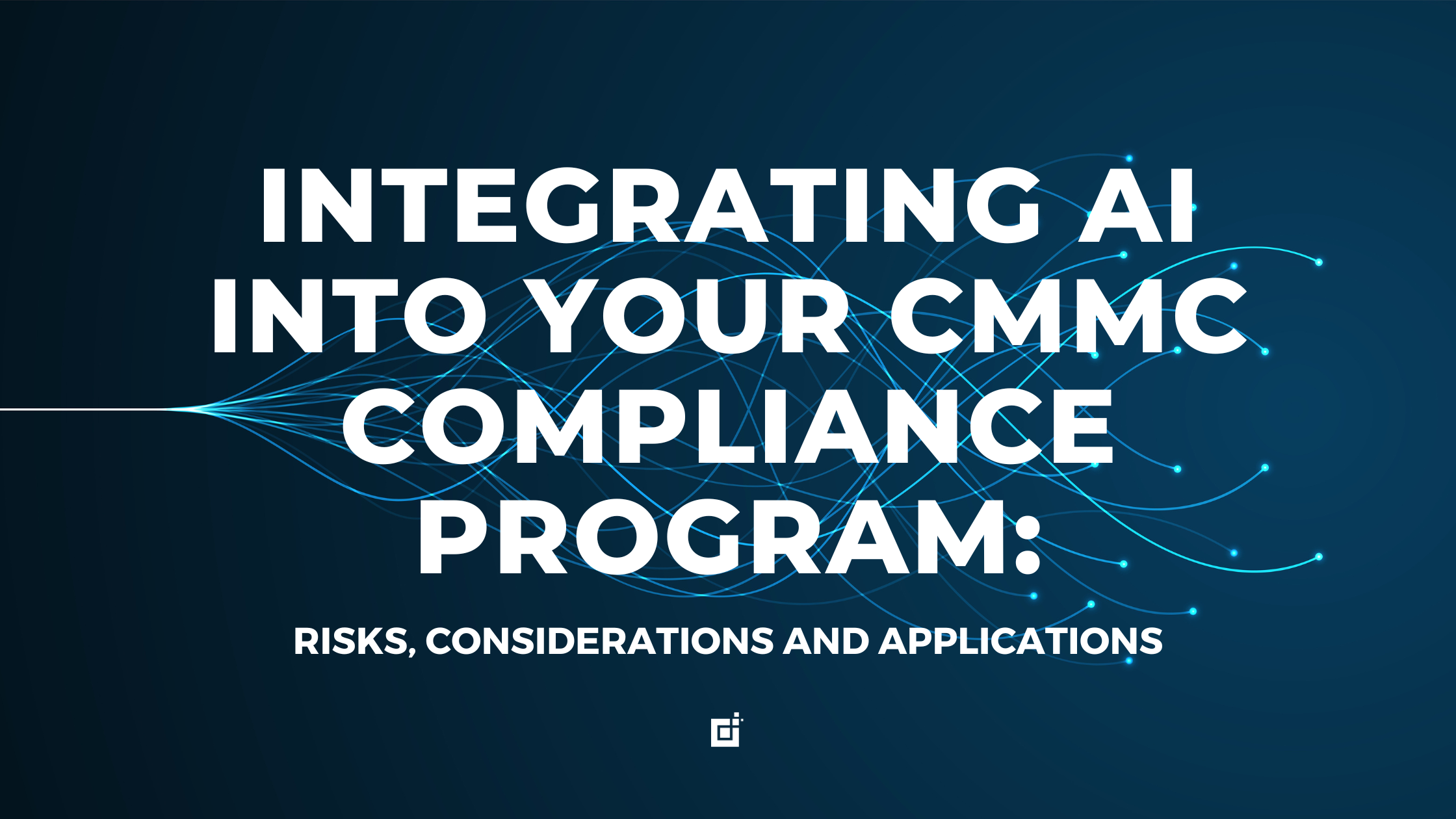
CMMC compliance can feel like a never-ending chain of requirements, with each task and requirement feeling more interconnected and cumulative the further you go. So, of course, when a tool or opportunity crops up that can streamline and automate some of that chain for us, our interest is piqued.
But as with any technology-related process, it’s essential to consider the risks, additional considerations, and applications, especially when it comes to something as daunting as CMMC compliance.
The Role of Artificial Intelligence
AI has become a hot-button topic and product that’s being implemented into processes, systems, and programs across the globe. It’s improving everything from customer service to cybersecurity defenses—but know that it is a tool, a machine, not an independent entity itself. The person operating the machine is who determines its effectiveness and whether they can use it to focus on tasks of more significant impact.
As a tool, however, it can be very powerful. Instead of undergoing the time-consuming and costly process of creating documents and performing assessments from scratch, AI can help risk professionals eliminate blank-page syndrome, kickstart their workflow, and increase their efficiency.
In application, this can look like enlisting this technology for:
- Threat detection and prevention, where the AI-powered system can continuously monitor network traffic, system logs, and user behavior to identify potential security threats.
- Creating drafts for Risk Statements by analyzing vulnerabilities and threat intelligence.
- Automating standards and controls to include suggested linkage to laws and regulations.
Those are just some examples. The possibilities are vast.
Risks and Challenges of Implementing AI
Integrating AI into CMMC compliance processes presents a myriad of benefits. But it can also come with risks and challenges you should be aware of, as unawareness can lead to significant legal and monetary repercussions. Some of those risks include:
- Data Privacy and Security Concerns
If not managed properly, the way you implement and use AI could put you at great risk of data breaches. When you’re handling such sensitive and classified information—which is the norm for CMMC compliance—it’s imperative that your AI technology workflow is properly designed, consistently maintained, and resilient against threats.
- Lack of Expertise
AI is a new technology, and its widespread usage is even newer. When a new technology is being pioneered, it makes sense that not all of us have the expertise or knowledge to integrate and manage AI systems effectively. Remedying this may look like training existing teams or roles or hiring someone who already has that expertise. Otherwise, incorrect implementation or improperly designed workflows could lead to errors, vulnerabilities, and loss events.
- Lack of Due Diligence
The increased efficiency and other positive results AI can bring quickly are staggering, however, relying too heavily on this tool without proper oversight can be dangerous. Remember, it’s us who are at the helm of that technology and who manage and maintain it. If we’re not doing our due diligence to double-check results and evaluations or maintain its functionalities, it can result in the neglect of privacy or security measures and falling prey to AI hallucination.
Critical Considerations for AI Integration
The process of implementing the power of AI in your complex CMMC compliance and GRC systems can be complex, but it doesn’t have to be. Before you undergo this process and begin leveraging this technology, make sure you keep these things in mind so you’re starting with a solid foundation and awareness of this technology’s implications:
AI Bias
It is in our human nature to be biased thanks to our emotions and experiences, but just because computers lack the human experience doesn’t mean they aren’t affected by it. Humans made this technology, and it adopts the bias that can stem from data used to train the AI system or algorithms that have unintentional cognitive prejudices.
Regulatory Compliance
While AI can be used to check and evaluate for CMMC compliance, it doesn’t relieve you of all burdens. Keep in mind that you have to keep up with additional data protection and cybersecurity regulations that pertain to the AI technology itself.
Costs and Resource Allocation
Properly implementing AI into existing processes and systems requires some up-front investment. If you rely on public AI, you’re putting yourself at risk of data privacy issues due to sensitive data being passed to the public model. Additionally, without proper process design and technology to support contextual prompting, you can get less-than-helpful responses due to the model lacking the background information to dial in what you’re asking for. If you’re going to implement AI, you should be willing to devote the appropriate time and resources to the endeavor.
The general integration of AI into new channels and systems is new, and we have so much to learn. But it’s important to stay up-to-date on technologies and how to ethically and efficiently implement and use them so we’re abreast with best practices.
For a deeper dive into these best practices, implications, and how the team at Cential has evaluated and integrated this technology into our processes, join the list to receive our upcoming whitepaper about leveraging AI and GRC technologies for CMMC compliance.
